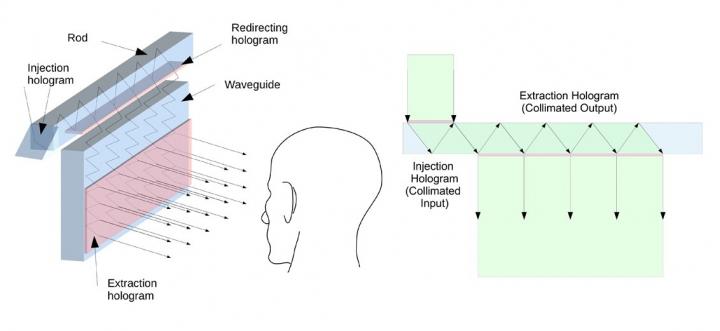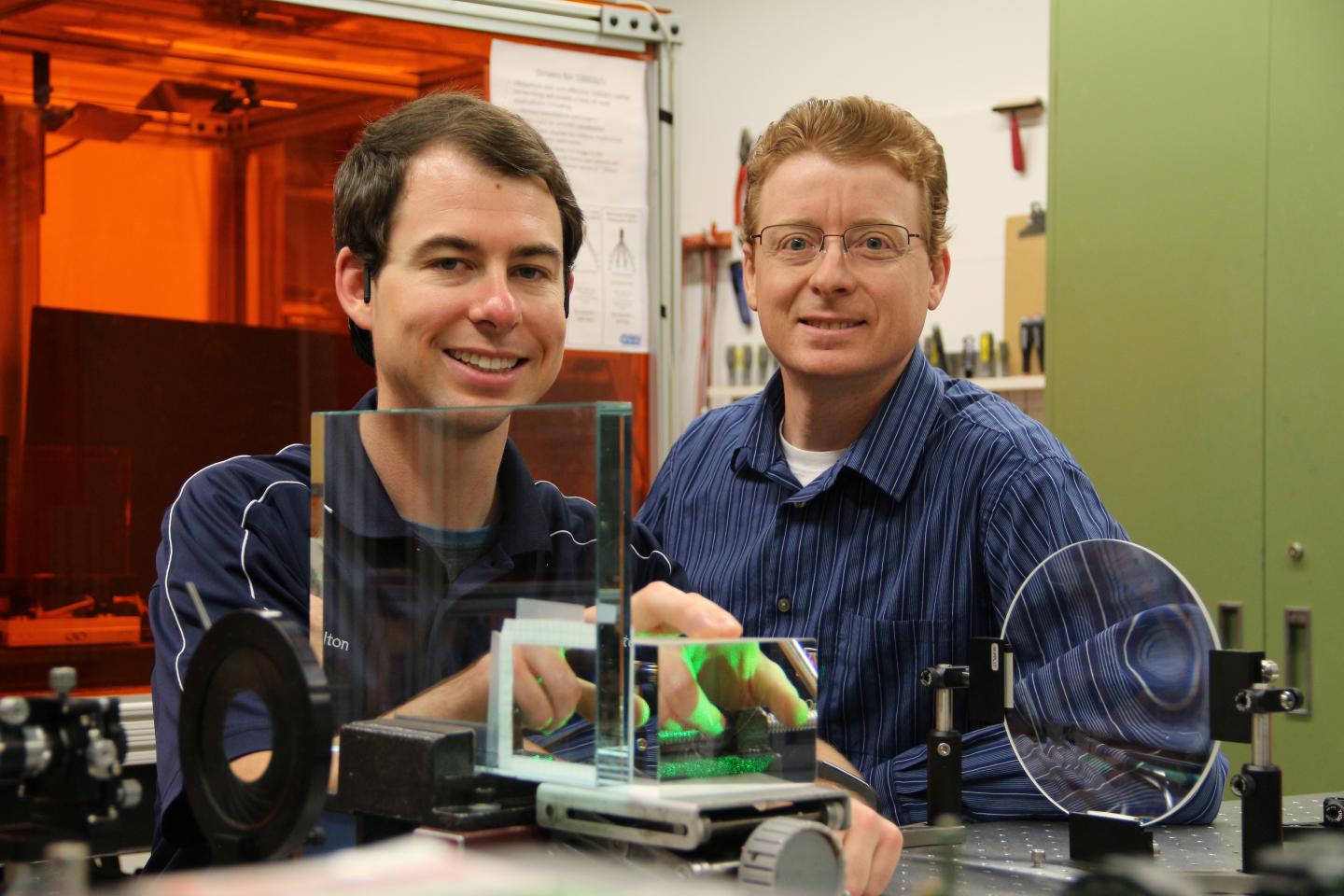New heads-up display technology will make it easier for drivers and pilots to see information while viewing the outside world
Heads-up displays are transparent devices used in airplanes and cars to provide information such as critical flight data or driving directions on the windshield. An innovative holography-based approach could soon make these heads-up displays much easier to see with a large eye box.
Current heads-up displays have a small eye box, meaning that the displayed information partially or wholly disappears if users shift their gaze too much. “A heads-up display using our new technology installed in a car would allow a driver to see the displayed information even if he or she moved around or was shorter or taller than average,” said research team leader Pierre-Alexandre Blanche of the University of Arizona, USA.
In The Optical Society journal Applied Optics, the researchers demonstrate a functional prototype heads-up display that uses holographic optical elements to achieve an eye box substantially larger than what is available without the holographic element. The researchers say that their approach could be turned into a commercial product in as little as a few years and might also be used to increase the size of the displayed area.

“Increasing the size of either the eye box or the displayed image in a traditional heads-up display requires increasing the size of the projection optics, relay lenses and all the associated optics, which takes up too much space in the dashboard,” said first author Colton Bigler, a doctoral student in Blanche’s laboratory. “Instead of relying on conventional optics, we use holography to create a thin optical element that can be ultimately applied onto a windshield directly.”
Using holograms to make optics
The same laser light interactions used to create the holograms that protect credit cards from forgery can also be used to fabricate optical elements such as lenses and filters in light-sensitive materials. These holographic elements are not only smaller than traditional optical components but can be mass produced because they are easily fabricated.
For the new head-up display, holographic optical elements redirect light from a small image into a piece of glass, where it is confined until it reaches another holographic optical element that extracts the light. The extraction hologram presents a viewable image with a larger eye box size than the original image.
“We are working with Honeywell to develop these displays for aircraft, but they could just as easily be used in cars,” Blanche said. “Our approach requires no expensive equipment and no new materials need to be developed. Furthermore, the display can be completely integrated into a standard car windshield.”
Click here to watch a video demonstration of the Holo-HUD and read the complete article.


